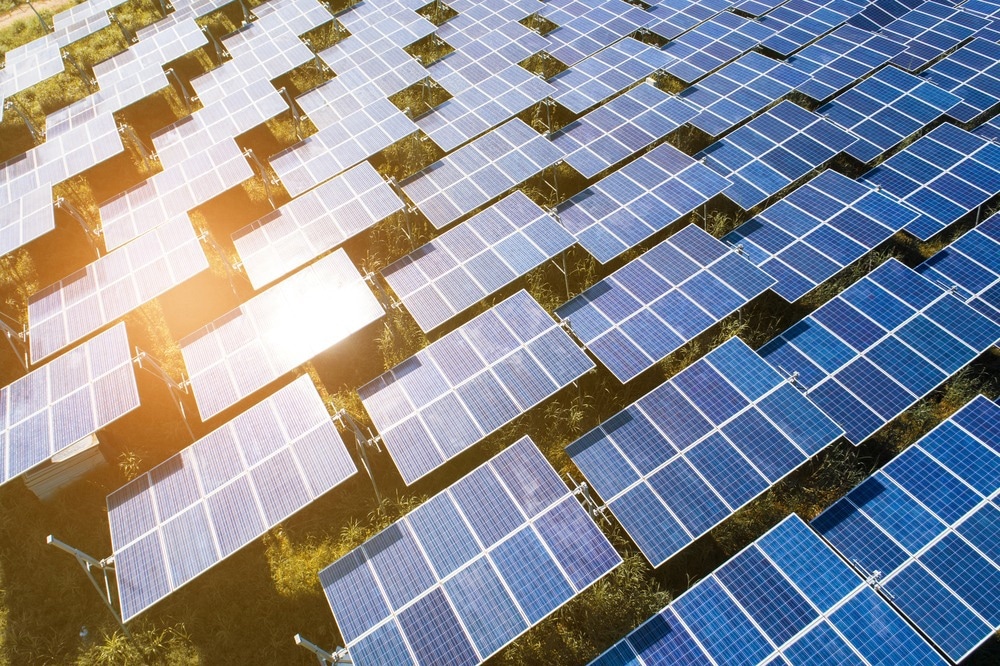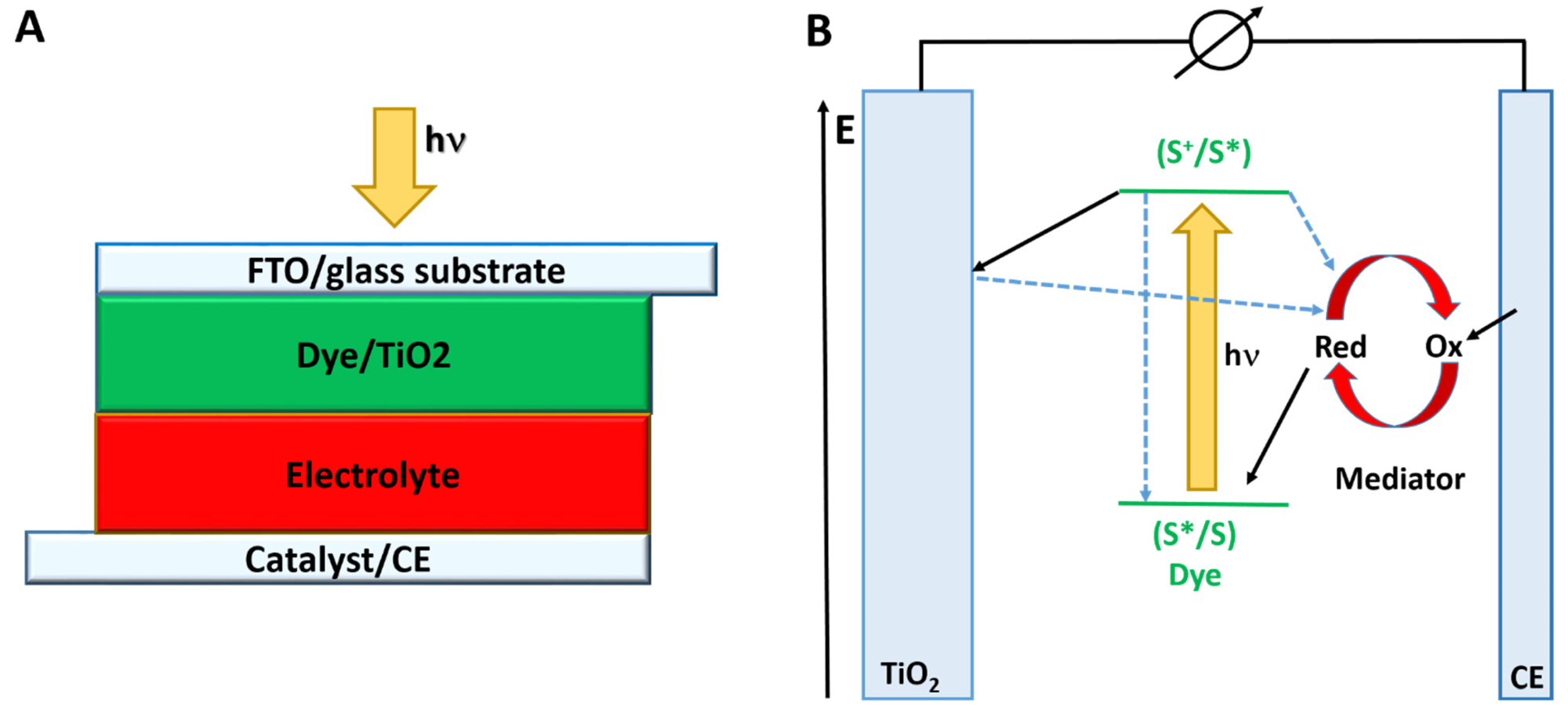In a paper recently published in the open-access journal Energies, researchers reviewed and provided an overview of the applications of peptides in dye-sensitized solar cell (DSSC) technology. The team highlighted the main advantages of peptide usage in DSSCs as templating materials for obtaining various TiO2 nanostructures as well as templating matrices in light-harvesting dyes.

Study: Peptide Materials in Dye Sensitized Solar Cells. Image Credit: Thongsuk7824/Shutterstock.com
Background
The sun provides 165,000 TW of solar power to the earth every day, which can be exploited economically and sustainably for electricity production. Therefore, DSSCs have been gathering significant attention owing to their tunable optical characteristics, ease of manufacture, and effective production costs. The optical properties can enable color selection while maintaining transparency, low impact of light angle on their performance, environmental sustainability, and efficient response in diffused light in comparison to PV technologies based on semiconductors.
In DSSC technology, sunlight is captured by a dye similar to that during photosynthesis. The capture of sunlight causes a charge separation due to the injection of an electron in a metal oxide’s conduction band. DSSCs can also be potent in indoor lighting conditions with efficiencies rising over 34%. Currently, perovskite solar cells (PSCs) have meaningfully and rapidly increased the efficiencies of DSSCs in both rigid and flexible devices.
However, the toxicity and stability of perovskite are concerning issues. This has prompted scientists to modify all the components of DSSCs for more eco-friendly, sustainable, and economical solar cells. Over the last couple of decades, biomimetic photovoltaic solar cells have garnered considerable interest due to the noteworthy improvements in efficient power conversion exhibited by them.
In particular, polypeptide matrices show efficient electron transfer (ET) along the arrangement of the inserted redox groups. It is believed that the α-helix, which is a recurring secondary structure in the polypeptide matrices, plays a chief role in an efficient ET process as confirmed by the smaller tunneling factor in ET reactions through α-helical peptides as compared to that in alkyl chains.

(A) The schematic structure and (B) main processes and principles of operation of the dye-sensitized solar cell. Image Credit: Gatto, E et al., Energies
Peptides as Dyes
Helical peptides have numerous merits that can be beneficial for developing molecular electronic components owing to their robustness, simplistic molecular design, molecular structure, functional group arrangements, and biocompatibility. Furthermore, peptides can be obtained from natural sources, thus facilitating solar cells consisting of renewable components.
A recent approach used self-assembled monolayers (SAMs) of helical peptides as materials to efficiently generate current under the light. Peptides enable retention of the templating properties of proteins, along with creating a two-dimensional (2D) arrangement, ensuring ET directionality and increased surface molecular density.
It was observed that the reduction in the peptide chain length improved the ET rate constant. Moreover, recent findings showed that photocurrent generation efficiency was influenced by the peptide’s helical secondary structure that was modulated by the pH. Particularly, the 310-helix was determined to be less efficient than the α-helix.
Another recent study attempted to build a peptide-based DSSC, which included a helical hexapeptide that created a 2D array and improved the dye’s photoconversion efficiency by 10 times while being stable during numerous cycles of measurement.
![Chemical structures of the building blocks used for the construction of films reported in ref. [85].](https://www.azom.com/images/news/ImageForNews_59735_16599537219278944.png)
Chemical structures of the building blocks used for the construction of films. Image Credit: Gatto, E et al., Energies
Peptides as Templating Materials
The efficiency of DSSCs can be enhanced via the control of multiple parameters, including the TiO2 components’ physicochemical properties, greater surface area for optimum dye adsorption, larger pore diameters and volumes, individual nanostructure network, and hole conduction efficiency.
However, it has been observed that the one-dimensional TiO2 nanostructures allow easier charge transport causing minimum diffusion resistance. Thus, an eco-friendly fabrication of anodic materials in DSSCs can be promoted by the use of organic templates made from self-assembled nanofibers of amyloid-like peptides, which favor one-dimensional growth of the TiO2 nanostructures.
Furthermore, Kim et al. were able to fabricate an empty TiO2 nanoribbon network through a biotemplating process that combined the atomic layer deposition (ALD) technique and peptide self-assembly. It was observed that the integration of a nanoribbon network electrode with a DSSC device exhibited 3.8% power conversion efficiency. This assembly also showed high thermal stability, thus facilitating its application in conventional vacuum depositional techniques through fine control of the temperature of the process.
![TEM images of P1-templated TiO2 nanotubes (a) and P2-templated TiO2 nanowires (b) obtained after calcination, adapted from [95], with permission of the Royal Society of Chemistry.](https://www.azom.com/images/news/ImageForNews_59735_16599537452491723.png)
TEM images of P1-templated TiO2 nanotubes (a) and P2-templated TiO2 nanowires (b) obtained after calcination. Image Credit: Gatto, E et al., Energies
Conclusions
To summarize, the team reviewed the role of peptides as sustainable components in DSSC. They studied the possibility of implementing peptides to bridge the surface of the electrode and the dye that favors the photo-induced ET process in a singular direction without charge recombination, while further improving the efficiency of the process.
Additionally, peptides, due to their self-assembling abilities, can be utilized as templating materials. The TiO2 film’s properties can be modulated by the differences in the supramolecular structures due to the different peptides used. According to the authors, peptides derived from natural sources may favor improvement in production as well as environmental and economic sustainability.
Disclaimer: The views expressed here are those of the author expressed in their private capacity and do not necessarily represent the views of AZoM.com Limited T/A AZoNetwork the owner and operator of this website. This disclaimer forms part of the Terms and conditions of use of this website.
Sources:
Gatto, E.; Lettieri, R.; Vesce, L.; Venanzi, M. Peptide Materials in Dye Sensitized Solar Cells. Energies 2022, 15, P. 5632. https://www.mdpi.com/1996-1073/15/15/5632
Han, T.H., et al. Peptide-templating dye-sensitized solar cells. Nanotechnology 2010, 21, P. 185601. https://iopscience.iop.org/article/10.1088/0957-4484/21/18/185601